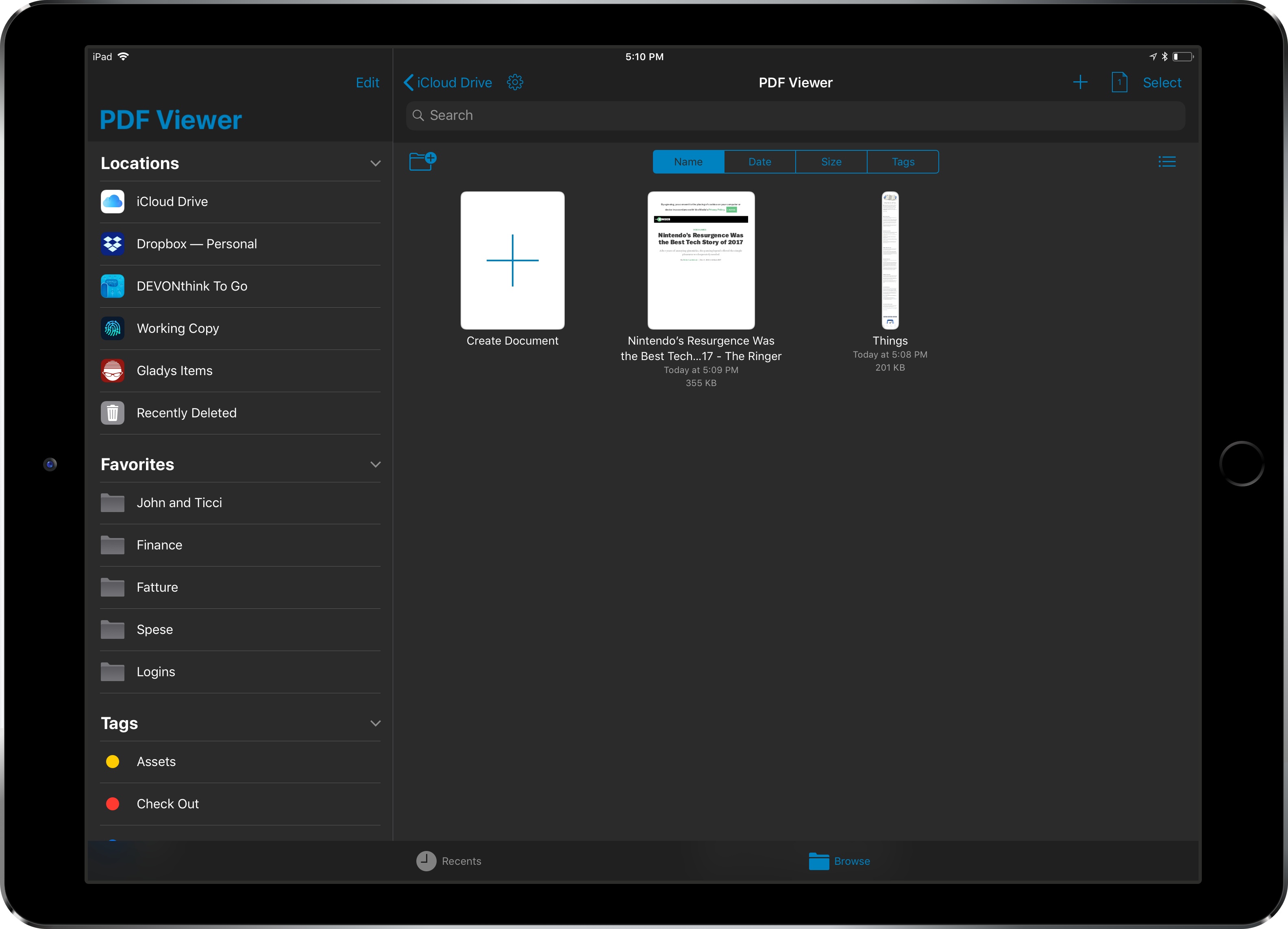Since the release of iOS 11, I haven’t seen many apps use the system’s new document browser – the built-in Files view that can be embedded in document-based apps as a root view. I covered this feature extensively in my iOS 11 review. Apple’s iWork suite of apps has switched to Files’ document browser, as did MindNode 5, but I’ve struggled to find other examples of high-profile third-party apps abandoning their custom file managers in favor of Apple’s solution. As I argued in September, my guess is that a combination of bugs and lack of deeper customization for the document browser is preventing more apps from embracing it. Which is too bad, as the Files integration brings substantial benefits in the form of drag and drop, iCloud Drive and third-party locations, recents and tags, and more.
PDF Viewer, the powerful PDF editor for iOS we originally reviewed here and here, is adding support for iOS 11’s document browser with version 2.1, launching today on the App Store. After testing a beta of this update for the past week, I’m impressed by how the folks at PSPDFKit have been able to fine-tune the document browser to the app’s needs.
PDF Viewer now uses the document browser as its main view: like in the Files app, you have two tabs for Recents and Browse; the latter is where you can navigate every location configured in Files, plus your favorites and tags. Unsurprisingly, PDF Viewer gets its own container in iCloud Drive by default. Aside from a custom heading, the app’s launch screen exactly mirrors what you’d see in the Files app, which is the entire point of adopting the document browser in iOS 11. It’s meant to turn Files into a system-wide layer for managing and opening documents in other apps.
There are a handful of customizations the PDF Viewer team was able to bring to the document browser. When you long-press a document in the browser, the copy & paste menu features two additional Export and Print actions that aren’t normally available in Files. This is a new extension point for the document browser in iOS 11 (which MindNode also uses for Versions), just like the settings icon in the top toolbar, used by PDF Viewer to open its settings. Speaking of which, you can change the document browser’s appearance, choosing one of the three options Apple made available to developers in iOS 11 – white, light, and dark.
Despite the slow adoption by third-party apps, I remain convinced that Files’ document browser is a good idea that needs to be refined to provide developers with more control over its UI and custom actions. As PDF Viewer 2.1 shows, the document browser allows you to manage a consistent working set of files without having to learn a new UI from scratch, with the added benefit of integrating with third-party storage locations to open and edit PDF documents.
iOS 11’s document browser isn’t without its quirks, but I believe that apps like MindNode and PDF Viewer are making a smart investment for the future in supporting it today. PDF Viewer 2.1 is available on the App Store.


